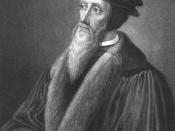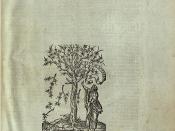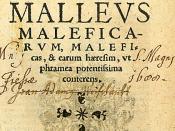Witch DBQ - Kylee Colwell
As the feared outcast of the community, accused witches faced unwarranted, misogynistic accusations, executions, and betrayal throughout Europe from 1480 to 1700. Witchcraft is defined as the ability to perform supernatural talents without the assistance of others. Anything deemed unordinary, or un-Christian like, could have someone blamed of the worst crime at the time, which was going against God. The rapid, unjust accusations came from the prejudiced community members, who were supported by the church. As a result of accusing one of witchcraft, one could gain the wealth of the accused, revenge, or their own innocence. Fear ran rampant in this time period, as not much was known and lives were evolving too drastically to keep up with, producing a substantial amount of disorder.
During this time, Europe encountered numerous hardships such as the plague, religious reformations, and ever-changing domestic boundaries. With barely any scientific awareness of the origins of tragic events, the people of Europe often blamed supernatural beings such as the devil or witches.
The impression of paranormal occurrences and people came from the strict bound religion and the church had over the people, as every aspect of existence was religion controlled. Religion enforced stringent rules on the roles of women as the maid of the household, one who obeys their husband and the men around her. Even monks would support misogyny, publishing their works, such as The Hammer of Witches, composed by Kramer and Sprenger, which states that women are "from the fragile sex" and because of this their bodies were "more open to the voice of Satan". (Doc. 6) Misogyny was also exhibited in the statistics, as women were far more sought after for witchcraft than men. The Court Records of Freiburg in Breslau, Germany stated that 82% of witches executed...


